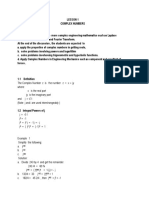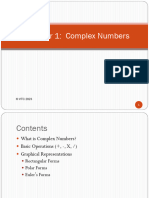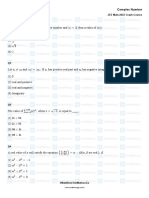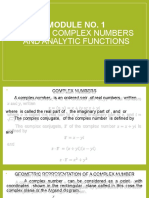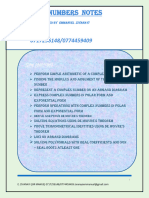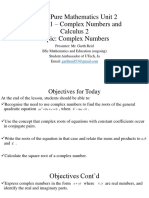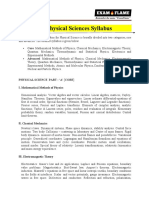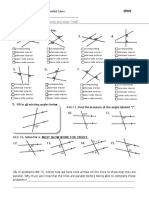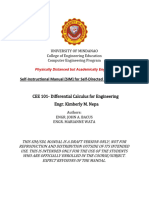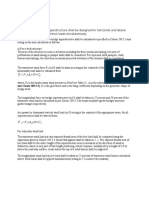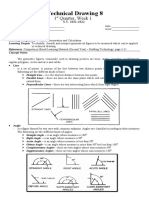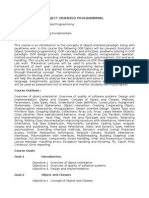Electrical Engineering Department Course name (Mathematic I) Complex numbers - Lecture Note
Complex numbers:
A Complex Number is a combination of a Real Number and an Imaginary Number.
Definition 1: A complex number is any number of the form where are
real numbers. The real part of and the imaginary part of .
Polar coordinates: the polar coordinate system is a two-dimensional coordinate system in
which each point on a plane is determined by a distance from a reference point and
an angle from a reference direction.
Complex numbers can be expressed in {
{⇒
IIIIIIIIIIIIIIIIIIIIIIIIIIIIIIIIIIIIIIIIIIIIIIIIIIIIIIIIIIIIIIIIIIIIIIIIIIIIIIIIIIIIIIIIIIIIIIIIIIIIIIIIIIIIIIIIIIIIIIIIIIIIIIIIIIIIIIIIIIIIIIIIIIIIII
⇒ ⇒ ⇒
⇐ ⇐ ⇐
√
From R to P ⇒ {
From P to R ⇒ {
̅
⇒ ̅
The Complex conjugate( ̅ ): ⇒ {
̅
⇒ ̅ ̅
1
� Electrical Engineering Department Course name (Mathematic I) Complex numbers - Lecture Note
Examples: Transform the following complex numbers to the others forms:
√
1. { ⇒ ⇒
2. { ⇒
( ) ( )
Example: We can compute ( ) ( ) , which gives
the famous .
Example: We also have ( ) ( )
Exercise: Transform the following numbers from Rectangular form to the polar and Exponential form.
Exercise: Transform the following numbers from polar and Exponential form to the Rectangular form.
2
� Electrical Engineering Department Course name (Mathematic I) Complex numbers - Lecture Note
Definition 2: If , then the complex conjugate of ̅, denoted ̅ The
magnitude or length of is defined as √
Example: We can calculate, if z = a + bi, then;
( )( ) ( )
Addition, Multiplication and Division:
If then:
( ) ( ) ( ) ( )
( ) ( ) ( ) ( )
( )( ) ( ) ( )
( ) ( ) ( )( )
( )
( ) ( ) ( )
( )( ) ( )( )
( )( )
̅̅̅ =
̅̅̅̅ ̅̅̅̅ =
( )
̅̅̅̅ =
3
� Electrical Engineering Department Course name (Mathematic I) Complex numbers - Lecture Note
Euler’s Formula:
Recall the circle diagram for trigonometric functions. The point with angle on the unit
circle has Cartesian coordinates ( ). As a complex number, this is such a useful
formula that writes as:
( ) ( )
{
( ) ( )
The length of a complex exponential is always one. .
i.e.: | | ( ) ( ) √( ) ( ) √
( ) ( )
⇒ {
( ) ( )
By using Euler’s Formula Many of the trigonometric identities
can be derived as followed:
1. Let are two complex numbers.
⇒ { ⇒
4
� Electrical Engineering Department Course name (Mathematic I) Complex numbers - Lecture Note
2. Let are two complex numbers with angles A, B
( ) ( )
⇒ ⇒ ( )( )
( ) ( ) ( )
⇒ ( )
⇒ ( )( )
⇒ ( ) ( )
If (1) and (2) are equal, then their real and imaginary parts must be equal, and thus:
( )
⇒ {
( )
We get a nice formula for ( ) and ( )
( ) ⇒ ( ) ( )
⇒ {
( ) ⇒
3. Let are two complex numbers with angles A, B
( ) ( )( ) ( )
⇒ ⇒
( ) ( ) ( )
⇒ ( )
⇒ ( )( )
⇒ ( ) ( ) ( )
If (1) and (2) are equal, then their real and imaginary parts must be equal, and thus:
( )
⇒ {
( )
IIIIIIIIIIIIIIIIIIIIIIIIIIIIIIIIIIIIIIIIIIIIIIIIIIIIIIIIIIIIIIIIIIIIIIIIIIIIIIIIIIIIIIIIIIIIIIIIIIIIIIIIIIIIIIIIIIIIIIIIIIIIIIIIIIIIIIIIIIIIIIIIIIIIII






